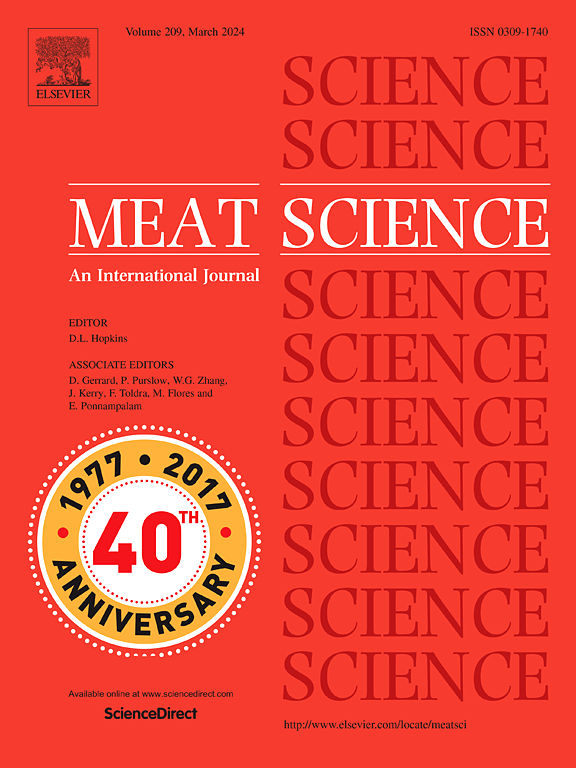Carcass quality of immunocastrated boars – A retrospective analysis of slaughterhouse data
IF 6.1
1区 农林科学
Q1 Agricultural and Biological Sciences
引用次数: 0
Abstract
The aim of the study was to analyze the meat quality of immunocastrated (Improvac®, IC) male in comparison with female (GI), surgically castrated (BA) and entire male (EM) fattening pigs. In contrast to previous experimental studies, this analysis is based on slaughter data from routine slaughtering from one slaughterhouse (Germany), which offered farmers since 2018 the option of voluntarily supplying IC without the usual financial deduction for boars. Carcass parameters were assessed using AutoFOM III™. Until 2022, data from 1,736,684 pigs from 203 farms were available. After checking for completeness, plausibility and gender balance, slaughter data of 1,613,660 pigs with 434,479 IC from 182 farms remained for analysis. Number of IC slaughtered per year increased to 48 % during the study period and largely replaced BA animals (5.4 %) in 2022. Sex had the largest influence on the most important carcass parameters (e.g. lean meat percentage), while carcass weight was mainly influenced by the farm, but also by the change in the price mask. The carcass parameters of IC ranked mainly between GI and BA and within the acceptable range of slaughterhouse requirements, with IC tending to have values closer to GI. The analysis shows that the meat quality of IC animals can meet slaughterhouse requirements comparable to GI and BA. Considering the carcass parameters analyzed in this study immunocastration appears to be a sustainable and future-proof solution to the castration controversy and should be promoted through fair accounting of IC via the standard price masks for BA and GI.
免疫阉割公猪的胴体质量——屠宰场数据的回顾性分析
本研究的目的是分析免疫阉割(Improvac®,IC)公猪与母猪(GI)、手术阉割(BA)和全公猪(EM)的肉质差异。与之前的实验研究相比,该分析基于一家屠宰场(德国)的常规屠宰数据,该屠宰场自2018年以来为农民提供了自愿提供IC的选择,而无需对公猪进行通常的财务扣除。采用AutoFOM III™评估胴体参数。到2022年,来自203个农场的1,736,684头猪的数据可用。在对完整性、合理性和性别平衡进行检验后,182个猪场的1613660头猪和434479头IC的屠宰数据仍有待分析。在研究期间,每年屠宰的IC动物数量增加到48%,并在2022年基本取代了BA动物(5.4%)。性别对最重要的胴体参数(如瘦肉率)影响最大,而胴体重主要受养殖场影响,但也受价格变化的影响。IC的胴体参数主要介于GI和BA之间,在屠宰场要求的可接受范围内,IC的值更接近GI。分析表明,IC动物的肉质可以满足与GI和BA相当的屠宰场要求。考虑到本研究分析的胴体参数,免疫去势似乎是一种可持续的、面向未来的去势争议解决方案,应通过BA和GI的标准价格面具公平核算IC来促进。
本文章由计算机程序翻译,如有差异,请以英文原文为准。
求助全文
约1分钟内获得全文
求助全文
来源期刊

Meat Science
工程技术-食品科技
CiteScore
12.60
自引率
9.90%
发文量
282
审稿时长
60 days
期刊介绍:
The aim of Meat Science is to serve as a suitable platform for the dissemination of interdisciplinary and international knowledge on all factors influencing the properties of meat. While the journal primarily focuses on the flesh of mammals, contributions related to poultry will be considered if they enhance the overall understanding of the relationship between muscle nature and meat quality post mortem. Additionally, papers on large birds (e.g., emus, ostriches) as well as wild-captured mammals and crocodiles will be welcomed.
 求助内容:
求助内容: 应助结果提醒方式:
应助结果提醒方式:


